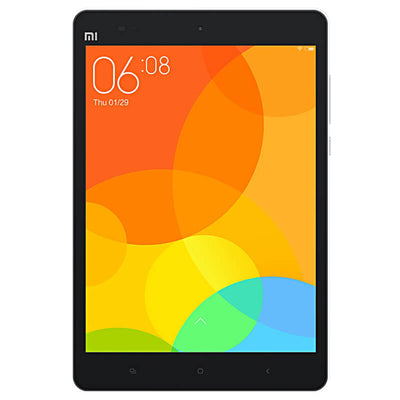Products

-
{"id":9153278152,"title":"Xiaomi Mi Pad 3","handle":"cum-sociis-natoque-penatibus-et-magnis-5","description":"\u003cul class=\"spec\"\u003e\n\u003cli\u003eTechnology: GSM \/ HSPA \/ LTE\u003c\/li\u003e\n\u003cli\u003eDimensions: 150 x 76 x 8.7 mm\u003c\/li\u003e\n\u003cli\u003eWeight: 164 g\u003c\/li\u003e\n\u003cli\u003eDisplay: IPS LC 5.5 inches\u003c\/li\u003e\n\u003cli\u003eResolution: 1080 x 1920\u003c\/li\u003e\n\u003cli\u003eOS: Android OS, v5.1.1 (Lollipop)\u003c\/li\u003e\n\u003cli\u003eChipset: Snapdragon 650\u003c\/li\u003e\n\u003cli\u003eCPU: Hexa-core\u003c\/li\u003e\n\u003cli\u003eInternal: 16GB\/2GB - 32GB\/3GB\u003c\/li\u003e\n\u003cli\u003eCamera: 16 MP, f\/2.0 - 5 MP, f\/2.0\u003c\/li\u003e\n\u003c\/ul\u003e\n\u003cdiv class=\"desc\"\u003e\n\u003cp\u003eThere's no way you have missed the Xiaomi Redmi Note 3. It's been the bang-for-buck benchmark for a while now, delivering a feature set and performance way above what its price tag suggests.\u003c\/p\u003e\n\u003cp\u003eTo refresh your memory Xiaomi launched the Redmi Note 3 at the turn of last year and it was powered by a MediaTek Helio X10. In the spring of 2016, a Qualcomm-driven Redmi Note 3 followed and broke the company's sales record in India. Now this full review admittedly comes a little late, but the Xiaomi Redmi Note 3 is still on many people's radar, so we figured a way to compare the Mediatek-powered original and the Snapdragon edition might come in handy.\u003c\/p\u003e\n\u003cp\u003eBesides the chipset, there's also a new camera sensor, a 16MP unit even if it is limited to 1080p video recording. Another difference is the second SIM card tray can now take microSD cards. It's the hybrid kind, which isn't ideal for people who want to have it all. Other than that, the hardware is perfectly familiar.\u003c\/p\u003e\n\u003c\/div\u003e","published_at":"2017-04-05T11:19:57-04:00","created_at":"2017-04-05T11:19:58-04:00","vendor":"Xiaomi","type":"Smart phone","tags":["100-200","Black","new","Tablet","Xiaomi"],"price":17599,"price_min":17599,"price_max":21099,"available":true,"price_varies":true,"compare_at_price":9000,"compare_at_price_min":9000,"compare_at_price_max":11000,"compare_at_price_varies":true,"variants":[{"id":33624819912,"title":"12GB \/ Silver \/ 2GB","option1":"12GB","option2":"Silver","option3":"2GB","sku":"","requires_shipping":true,"taxable":true,"featured_image":null,"available":true,"name":"Xiaomi Mi Pad 3 - 12GB \/ Silver \/ 2GB","public_title":"12GB \/ Silver \/ 2GB","options":["12GB","Silver","2GB"],"price":17599,"weight":1000,"compare_at_price":11000,"inventory_quantity":1,"inventory_management":"shopify","inventory_policy":"deny","barcode":"","requires_selling_plan":false,"selling_plan_allocations":[],"quantity_rule":{"min":1,"max":null,"increment":1}},{"id":33624819976,"title":"12GB \/ Gray \/ 2GB","option1":"12GB","option2":"Gray","option3":"2GB","sku":"","requires_shipping":true,"taxable":true,"featured_image":null,"available":true,"name":"Xiaomi Mi Pad 3 - 12GB \/ Gray \/ 2GB","public_title":"12GB \/ Gray \/ 2GB","options":["12GB","Gray","2GB"],"price":17599,"weight":1000,"compare_at_price":11000,"inventory_quantity":1,"inventory_management":"shopify","inventory_policy":"deny","barcode":"","requires_selling_plan":false,"selling_plan_allocations":[],"quantity_rule":{"min":1,"max":null,"increment":1}},{"id":33624820040,"title":"12GB \/ Gold \/ 2GB","option1":"12GB","option2":"Gold","option3":"2GB","sku":"","requires_shipping":true,"taxable":true,"featured_image":null,"available":true,"name":"Xiaomi Mi Pad 3 - 12GB \/ Gold \/ 2GB","public_title":"12GB \/ Gold \/ 2GB","options":["12GB","Gold","2GB"],"price":17599,"weight":1000,"compare_at_price":11000,"inventory_quantity":1,"inventory_management":"shopify","inventory_policy":"deny","barcode":"","requires_selling_plan":false,"selling_plan_allocations":[],"quantity_rule":{"min":1,"max":null,"increment":1}},{"id":33624820104,"title":"12GB \/ Silver \/ 3GB","option1":"12GB","option2":"Silver","option3":"3GB","sku":"","requires_shipping":true,"taxable":true,"featured_image":null,"available":true,"name":"Xiaomi Mi Pad 3 - 12GB \/ Silver \/ 3GB","public_title":"12GB \/ Silver \/ 3GB","options":["12GB","Silver","3GB"],"price":19899,"weight":1000,"compare_at_price":11000,"inventory_quantity":1,"inventory_management":"shopify","inventory_policy":"deny","barcode":"","requires_selling_plan":false,"selling_plan_allocations":[],"quantity_rule":{"min":1,"max":null,"increment":1}},{"id":33624820168,"title":"12GB \/ Gray \/ 3GB","option1":"12GB","option2":"Gray","option3":"3GB","sku":"","requires_shipping":true,"taxable":true,"featured_image":null,"available":true,"name":"Xiaomi Mi Pad 3 - 12GB \/ Gray \/ 3GB","public_title":"12GB \/ Gray \/ 3GB","options":["12GB","Gray","3GB"],"price":19899,"weight":1000,"compare_at_price":11000,"inventory_quantity":1,"inventory_management":"shopify","inventory_policy":"deny","barcode":"","requires_selling_plan":false,"selling_plan_allocations":[],"quantity_rule":{"min":1,"max":null,"increment":1}},{"id":33624820296,"title":"12GB \/ Gold \/ 3GB","option1":"12GB","option2":"Gold","option3":"3GB","sku":"","requires_shipping":true,"taxable":true,"featured_image":null,"available":true,"name":"Xiaomi Mi Pad 3 - 12GB \/ Gold \/ 3GB","public_title":"12GB \/ Gold \/ 3GB","options":["12GB","Gold","3GB"],"price":19899,"weight":1000,"compare_at_price":9000,"inventory_quantity":2,"inventory_management":"shopify","inventory_policy":"deny","barcode":"","requires_selling_plan":false,"selling_plan_allocations":[],"quantity_rule":{"min":1,"max":null,"increment":1}},{"id":33624820488,"title":"32GB \/ Silver \/ 2GB","option1":"32GB","option2":"Silver","option3":"2GB","sku":"","requires_shipping":true,"taxable":true,"featured_image":null,"available":true,"name":"Xiaomi Mi Pad 3 - 32GB \/ Silver \/ 2GB","public_title":"32GB \/ Silver \/ 2GB","options":["32GB","Silver","2GB"],"price":19899,"weight":1000,"compare_at_price":9000,"inventory_quantity":2,"inventory_management":"shopify","inventory_policy":"deny","barcode":"","requires_selling_plan":false,"selling_plan_allocations":[],"quantity_rule":{"min":1,"max":null,"increment":1}},{"id":33624820680,"title":"32GB \/ Gray \/ 2GB","option1":"32GB","option2":"Gray","option3":"2GB","sku":"","requires_shipping":true,"taxable":true,"featured_image":null,"available":true,"name":"Xiaomi Mi Pad 3 - 32GB \/ Gray \/ 2GB","public_title":"32GB \/ Gray \/ 2GB","options":["32GB","Gray","2GB"],"price":19899,"weight":1000,"compare_at_price":9000,"inventory_quantity":2,"inventory_management":"shopify","inventory_policy":"deny","barcode":"","requires_selling_plan":false,"selling_plan_allocations":[],"quantity_rule":{"min":1,"max":null,"increment":1}},{"id":33624820872,"title":"32GB \/ Gold \/ 2GB","option1":"32GB","option2":"Gold","option3":"2GB","sku":"","requires_shipping":true,"taxable":true,"featured_image":null,"available":true,"name":"Xiaomi Mi Pad 3 - 32GB \/ Gold \/ 2GB","public_title":"32GB \/ Gold \/ 2GB","options":["32GB","Gold","2GB"],"price":19899,"weight":1000,"compare_at_price":9000,"inventory_quantity":2,"inventory_management":"shopify","inventory_policy":"deny","barcode":"","requires_selling_plan":false,"selling_plan_allocations":[],"quantity_rule":{"min":1,"max":null,"increment":1}},{"id":33624821064,"title":"32GB \/ Silver \/ 3GB","option1":"32GB","option2":"Silver","option3":"3GB","sku":"","requires_shipping":true,"taxable":true,"featured_image":null,"available":true,"name":"Xiaomi Mi Pad 3 - 32GB \/ Silver \/ 3GB","public_title":"32GB \/ Silver \/ 3GB","options":["32GB","Silver","3GB"],"price":21099,"weight":1000,"compare_at_price":null,"inventory_quantity":10,"inventory_management":"shopify","inventory_policy":"deny","barcode":"","requires_selling_plan":false,"selling_plan_allocations":[],"quantity_rule":{"min":1,"max":null,"increment":1}},{"id":33624821192,"title":"32GB \/ Gray \/ 3GB","option1":"32GB","option2":"Gray","option3":"3GB","sku":"","requires_shipping":true,"taxable":true,"featured_image":null,"available":true,"name":"Xiaomi Mi Pad 3 - 32GB \/ Gray \/ 3GB","public_title":"32GB \/ Gray \/ 3GB","options":["32GB","Gray","3GB"],"price":21099,"weight":1000,"compare_at_price":null,"inventory_quantity":10,"inventory_management":"shopify","inventory_policy":"deny","barcode":"","requires_selling_plan":false,"selling_plan_allocations":[],"quantity_rule":{"min":1,"max":null,"increment":1}},{"id":33624821384,"title":"32GB \/ Gold \/ 3GB","option1":"32GB","option2":"Gold","option3":"3GB","sku":"","requires_shipping":true,"taxable":true,"featured_image":null,"available":true,"name":"Xiaomi Mi Pad 3 - 32GB \/ Gold \/ 3GB","public_title":"32GB \/ Gold \/ 3GB","options":["32GB","Gold","3GB"],"price":21099,"weight":1000,"compare_at_price":null,"inventory_quantity":10,"inventory_management":"shopify","inventory_policy":"deny","barcode":"","requires_selling_plan":false,"selling_plan_allocations":[],"quantity_rule":{"min":1,"max":null,"increment":1}}],"images":["\/\/digital-world-4.myshopify.com\/cdn\/shop\/products\/Untitled-1_1.jpg?v=1491405598","\/\/digital-world-4.myshopify.com\/cdn\/shop\/products\/SS6.jpg?v=1491405598","\/\/digital-world-4.myshopify.com\/cdn\/shop\/products\/xiaomi-redmi-note-3-1.jpg?v=1491405598","\/\/digital-world-4.myshopify.com\/cdn\/shop\/products\/xiaomi-redmi-note-3-2.jpg?v=1491405598","\/\/digital-world-4.myshopify.com\/cdn\/shop\/products\/xiaomi-redmi-note-3-3.jpg?v=1491405598"],"featured_image":"\/\/digital-world-4.myshopify.com\/cdn\/shop\/products\/Untitled-1_1.jpg?v=1491405598","options":["Internal","Color","Ram"],"media":[{"alt":null,"id":405452390436,"position":1,"preview_image":{"aspect_ratio":1.0,"height":800,"width":800,"src":"\/\/digital-world-4.myshopify.com\/cdn\/shop\/products\/Untitled-1_1.jpg?v=1491405598"},"aspect_ratio":1.0,"height":800,"media_type":"image","src":"\/\/digital-world-4.myshopify.com\/cdn\/shop\/products\/Untitled-1_1.jpg?v=1491405598","width":800},{"alt":null,"id":405452423204,"position":2,"preview_image":{"aspect_ratio":1.0,"height":800,"width":800,"src":"\/\/digital-world-4.myshopify.com\/cdn\/shop\/products\/SS6.jpg?v=1491405598"},"aspect_ratio":1.0,"height":800,"media_type":"image","src":"\/\/digital-world-4.myshopify.com\/cdn\/shop\/products\/SS6.jpg?v=1491405598","width":800},{"alt":null,"id":405452455972,"position":3,"preview_image":{"aspect_ratio":1.299,"height":508,"width":660,"src":"\/\/digital-world-4.myshopify.com\/cdn\/shop\/products\/xiaomi-redmi-note-3-1.jpg?v=1491405598"},"aspect_ratio":1.299,"height":508,"media_type":"image","src":"\/\/digital-world-4.myshopify.com\/cdn\/shop\/products\/xiaomi-redmi-note-3-1.jpg?v=1491405598","width":660},{"alt":null,"id":405452488740,"position":4,"preview_image":{"aspect_ratio":0.658,"height":600,"width":395,"src":"\/\/digital-world-4.myshopify.com\/cdn\/shop\/products\/xiaomi-redmi-note-3-2.jpg?v=1491405598"},"aspect_ratio":0.658,"height":600,"media_type":"image","src":"\/\/digital-world-4.myshopify.com\/cdn\/shop\/products\/xiaomi-redmi-note-3-2.jpg?v=1491405598","width":395},{"alt":null,"id":405452521508,"position":5,"preview_image":{"aspect_ratio":2.308,"height":286,"width":660,"src":"\/\/digital-world-4.myshopify.com\/cdn\/shop\/products\/xiaomi-redmi-note-3-3.jpg?v=1491405598"},"aspect_ratio":2.308,"height":286,"media_type":"image","src":"\/\/digital-world-4.myshopify.com\/cdn\/shop\/products\/xiaomi-redmi-note-3-3.jpg?v=1491405598","width":660}],"requires_selling_plan":false,"selling_plan_groups":[],"content":"\u003cul class=\"spec\"\u003e\n\u003cli\u003eTechnology: GSM \/ HSPA \/ LTE\u003c\/li\u003e\n\u003cli\u003eDimensions: 150 x 76 x 8.7 mm\u003c\/li\u003e\n\u003cli\u003eWeight: 164 g\u003c\/li\u003e\n\u003cli\u003eDisplay: IPS LC 5.5 inches\u003c\/li\u003e\n\u003cli\u003eResolution: 1080 x 1920\u003c\/li\u003e\n\u003cli\u003eOS: Android OS, v5.1.1 (Lollipop)\u003c\/li\u003e\n\u003cli\u003eChipset: Snapdragon 650\u003c\/li\u003e\n\u003cli\u003eCPU: Hexa-core\u003c\/li\u003e\n\u003cli\u003eInternal: 16GB\/2GB - 32GB\/3GB\u003c\/li\u003e\n\u003cli\u003eCamera: 16 MP, f\/2.0 - 5 MP, f\/2.0\u003c\/li\u003e\n\u003c\/ul\u003e\n\u003cdiv class=\"desc\"\u003e\n\u003cp\u003eThere's no way you have missed the Xiaomi Redmi Note 3. It's been the bang-for-buck benchmark for a while now, delivering a feature set and performance way above what its price tag suggests.\u003c\/p\u003e\n\u003cp\u003eTo refresh your memory Xiaomi launched the Redmi Note 3 at the turn of last year and it was powered by a MediaTek Helio X10. In the spring of 2016, a Qualcomm-driven Redmi Note 3 followed and broke the company's sales record in India. Now this full review admittedly comes a little late, but the Xiaomi Redmi Note 3 is still on many people's radar, so we figured a way to compare the Mediatek-powered original and the Snapdragon edition might come in handy.\u003c\/p\u003e\n\u003cp\u003eBesides the chipset, there's also a new camera sensor, a 16MP unit even if it is limited to 1080p video recording. Another difference is the second SIM card tray can now take microSD cards. It's the hybrid kind, which isn't ideal for people who want to have it all. Other than that, the hardware is perfectly familiar.\u003c\/p\u003e\n\u003c\/div\u003e"}
- Technology: GSM / HSPA / LTE
- Dimensions: 150 x 76 x 8.7 mm
- Weight: 164 g
- Display: IPS LC 5.5 inches
- Resolution: 1080 x 1920
- OS: Android OS, v5.1.1 (Lollipop)
- Chipset: Snapdragon 650
- CPU: Hexa-core
- Internal: 16GB/2GB - 32GB/3GB
- Camera: 16 MP, f/2.0 - 5 MP, f/2.0
There's no way you have missed the Xiaomi Redmi Note 3. It's been the bang-for-buck benchmark for a while now, delivering a feature set and performance way above what its price tag suggests.
To refresh your memory Xiaomi launched the Redmi Note 3 at the turn of last year and it was powered by a MediaTek Helio X10. In the spring of 2016, a Qualcomm-driven Redmi Note 3 followed and broke the company's sales record in India. Now this full review admittedly comes a little late, but the Xiaomi Redmi Note 3 is still on many people's radar, so we figured a way to compare the Mediatek-powered original and the Snapdragon edition might come in handy.
Besides the chipset, there's also a new camera sensor, a 16MP unit even if it is limited to 1080p video recording. Another difference is the second SIM card tray can now take microSD cards. It's the hybrid kind, which isn't ideal for people who want to have it all. Other than that, the hardware is perfectly familiar.
-
{"id":9153278152,"title":"Xiaomi Mi Pad 3","handle":"cum-sociis-natoque-penatibus-et-magnis-5","description":"\u003cul class=\"spec\"\u003e\n\u003cli\u003eTechnology: GSM \/ HSPA \/ LTE\u003c\/li\u003e\n\u003cli\u003eDimensions: 150 x 76 x 8.7 mm\u003c\/li\u003e\n\u003cli\u003eWeight: 164 g\u003c\/li\u003e\n\u003cli\u003eDisplay: IPS LC 5.5 inches\u003c\/li\u003e\n\u003cli\u003eResolution: 1080 x 1920\u003c\/li\u003e\n\u003cli\u003eOS: Android OS, v5.1.1 (Lollipop)\u003c\/li\u003e\n\u003cli\u003eChipset: Snapdragon 650\u003c\/li\u003e\n\u003cli\u003eCPU: Hexa-core\u003c\/li\u003e\n\u003cli\u003eInternal: 16GB\/2GB - 32GB\/3GB\u003c\/li\u003e\n\u003cli\u003eCamera: 16 MP, f\/2.0 - 5 MP, f\/2.0\u003c\/li\u003e\n\u003c\/ul\u003e\n\u003cdiv class=\"desc\"\u003e\n\u003cp\u003eThere's no way you have missed the Xiaomi Redmi Note 3. It's been the bang-for-buck benchmark for a while now, delivering a feature set and performance way above what its price tag suggests.\u003c\/p\u003e\n\u003cp\u003eTo refresh your memory Xiaomi launched the Redmi Note 3 at the turn of last year and it was powered by a MediaTek Helio X10. In the spring of 2016, a Qualcomm-driven Redmi Note 3 followed and broke the company's sales record in India. Now this full review admittedly comes a little late, but the Xiaomi Redmi Note 3 is still on many people's radar, so we figured a way to compare the Mediatek-powered original and the Snapdragon edition might come in handy.\u003c\/p\u003e\n\u003cp\u003eBesides the chipset, there's also a new camera sensor, a 16MP unit even if it is limited to 1080p video recording. Another difference is the second SIM card tray can now take microSD cards. It's the hybrid kind, which isn't ideal for people who want to have it all. Other than that, the hardware is perfectly familiar.\u003c\/p\u003e\n\u003c\/div\u003e","published_at":"2017-04-05T11:19:57-04:00","created_at":"2017-04-05T11:19:58-04:00","vendor":"Xiaomi","type":"Smart phone","tags":["100-200","Black","new","Tablet","Xiaomi"],"price":17599,"price_min":17599,"price_max":21099,"available":true,"price_varies":true,"compare_at_price":9000,"compare_at_price_min":9000,"compare_at_price_max":11000,"compare_at_price_varies":true,"variants":[{"id":33624819912,"title":"12GB \/ Silver \/ 2GB","option1":"12GB","option2":"Silver","option3":"2GB","sku":"","requires_shipping":true,"taxable":true,"featured_image":null,"available":true,"name":"Xiaomi Mi Pad 3 - 12GB \/ Silver \/ 2GB","public_title":"12GB \/ Silver \/ 2GB","options":["12GB","Silver","2GB"],"price":17599,"weight":1000,"compare_at_price":11000,"inventory_quantity":1,"inventory_management":"shopify","inventory_policy":"deny","barcode":"","requires_selling_plan":false,"selling_plan_allocations":[],"quantity_rule":{"min":1,"max":null,"increment":1}},{"id":33624819976,"title":"12GB \/ Gray \/ 2GB","option1":"12GB","option2":"Gray","option3":"2GB","sku":"","requires_shipping":true,"taxable":true,"featured_image":null,"available":true,"name":"Xiaomi Mi Pad 3 - 12GB \/ Gray \/ 2GB","public_title":"12GB \/ Gray \/ 2GB","options":["12GB","Gray","2GB"],"price":17599,"weight":1000,"compare_at_price":11000,"inventory_quantity":1,"inventory_management":"shopify","inventory_policy":"deny","barcode":"","requires_selling_plan":false,"selling_plan_allocations":[],"quantity_rule":{"min":1,"max":null,"increment":1}},{"id":33624820040,"title":"12GB \/ Gold \/ 2GB","option1":"12GB","option2":"Gold","option3":"2GB","sku":"","requires_shipping":true,"taxable":true,"featured_image":null,"available":true,"name":"Xiaomi Mi Pad 3 - 12GB \/ Gold \/ 2GB","public_title":"12GB \/ Gold \/ 2GB","options":["12GB","Gold","2GB"],"price":17599,"weight":1000,"compare_at_price":11000,"inventory_quantity":1,"inventory_management":"shopify","inventory_policy":"deny","barcode":"","requires_selling_plan":false,"selling_plan_allocations":[],"quantity_rule":{"min":1,"max":null,"increment":1}},{"id":33624820104,"title":"12GB \/ Silver \/ 3GB","option1":"12GB","option2":"Silver","option3":"3GB","sku":"","requires_shipping":true,"taxable":true,"featured_image":null,"available":true,"name":"Xiaomi Mi Pad 3 - 12GB \/ Silver \/ 3GB","public_title":"12GB \/ Silver \/ 3GB","options":["12GB","Silver","3GB"],"price":19899,"weight":1000,"compare_at_price":11000,"inventory_quantity":1,"inventory_management":"shopify","inventory_policy":"deny","barcode":"","requires_selling_plan":false,"selling_plan_allocations":[],"quantity_rule":{"min":1,"max":null,"increment":1}},{"id":33624820168,"title":"12GB \/ Gray \/ 3GB","option1":"12GB","option2":"Gray","option3":"3GB","sku":"","requires_shipping":true,"taxable":true,"featured_image":null,"available":true,"name":"Xiaomi Mi Pad 3 - 12GB \/ Gray \/ 3GB","public_title":"12GB \/ Gray \/ 3GB","options":["12GB","Gray","3GB"],"price":19899,"weight":1000,"compare_at_price":11000,"inventory_quantity":1,"inventory_management":"shopify","inventory_policy":"deny","barcode":"","requires_selling_plan":false,"selling_plan_allocations":[],"quantity_rule":{"min":1,"max":null,"increment":1}},{"id":33624820296,"title":"12GB \/ Gold \/ 3GB","option1":"12GB","option2":"Gold","option3":"3GB","sku":"","requires_shipping":true,"taxable":true,"featured_image":null,"available":true,"name":"Xiaomi Mi Pad 3 - 12GB \/ Gold \/ 3GB","public_title":"12GB \/ Gold \/ 3GB","options":["12GB","Gold","3GB"],"price":19899,"weight":1000,"compare_at_price":9000,"inventory_quantity":2,"inventory_management":"shopify","inventory_policy":"deny","barcode":"","requires_selling_plan":false,"selling_plan_allocations":[],"quantity_rule":{"min":1,"max":null,"increment":1}},{"id":33624820488,"title":"32GB \/ Silver \/ 2GB","option1":"32GB","option2":"Silver","option3":"2GB","sku":"","requires_shipping":true,"taxable":true,"featured_image":null,"available":true,"name":"Xiaomi Mi Pad 3 - 32GB \/ Silver \/ 2GB","public_title":"32GB \/ Silver \/ 2GB","options":["32GB","Silver","2GB"],"price":19899,"weight":1000,"compare_at_price":9000,"inventory_quantity":2,"inventory_management":"shopify","inventory_policy":"deny","barcode":"","requires_selling_plan":false,"selling_plan_allocations":[],"quantity_rule":{"min":1,"max":null,"increment":1}},{"id":33624820680,"title":"32GB \/ Gray \/ 2GB","option1":"32GB","option2":"Gray","option3":"2GB","sku":"","requires_shipping":true,"taxable":true,"featured_image":null,"available":true,"name":"Xiaomi Mi Pad 3 - 32GB \/ Gray \/ 2GB","public_title":"32GB \/ Gray \/ 2GB","options":["32GB","Gray","2GB"],"price":19899,"weight":1000,"compare_at_price":9000,"inventory_quantity":2,"inventory_management":"shopify","inventory_policy":"deny","barcode":"","requires_selling_plan":false,"selling_plan_allocations":[],"quantity_rule":{"min":1,"max":null,"increment":1}},{"id":33624820872,"title":"32GB \/ Gold \/ 2GB","option1":"32GB","option2":"Gold","option3":"2GB","sku":"","requires_shipping":true,"taxable":true,"featured_image":null,"available":true,"name":"Xiaomi Mi Pad 3 - 32GB \/ Gold \/ 2GB","public_title":"32GB \/ Gold \/ 2GB","options":["32GB","Gold","2GB"],"price":19899,"weight":1000,"compare_at_price":9000,"inventory_quantity":2,"inventory_management":"shopify","inventory_policy":"deny","barcode":"","requires_selling_plan":false,"selling_plan_allocations":[],"quantity_rule":{"min":1,"max":null,"increment":1}},{"id":33624821064,"title":"32GB \/ Silver \/ 3GB","option1":"32GB","option2":"Silver","option3":"3GB","sku":"","requires_shipping":true,"taxable":true,"featured_image":null,"available":true,"name":"Xiaomi Mi Pad 3 - 32GB \/ Silver \/ 3GB","public_title":"32GB \/ Silver \/ 3GB","options":["32GB","Silver","3GB"],"price":21099,"weight":1000,"compare_at_price":null,"inventory_quantity":10,"inventory_management":"shopify","inventory_policy":"deny","barcode":"","requires_selling_plan":false,"selling_plan_allocations":[],"quantity_rule":{"min":1,"max":null,"increment":1}},{"id":33624821192,"title":"32GB \/ Gray \/ 3GB","option1":"32GB","option2":"Gray","option3":"3GB","sku":"","requires_shipping":true,"taxable":true,"featured_image":null,"available":true,"name":"Xiaomi Mi Pad 3 - 32GB \/ Gray \/ 3GB","public_title":"32GB \/ Gray \/ 3GB","options":["32GB","Gray","3GB"],"price":21099,"weight":1000,"compare_at_price":null,"inventory_quantity":10,"inventory_management":"shopify","inventory_policy":"deny","barcode":"","requires_selling_plan":false,"selling_plan_allocations":[],"quantity_rule":{"min":1,"max":null,"increment":1}},{"id":33624821384,"title":"32GB \/ Gold \/ 3GB","option1":"32GB","option2":"Gold","option3":"3GB","sku":"","requires_shipping":true,"taxable":true,"featured_image":null,"available":true,"name":"Xiaomi Mi Pad 3 - 32GB \/ Gold \/ 3GB","public_title":"32GB \/ Gold \/ 3GB","options":["32GB","Gold","3GB"],"price":21099,"weight":1000,"compare_at_price":null,"inventory_quantity":10,"inventory_management":"shopify","inventory_policy":"deny","barcode":"","requires_selling_plan":false,"selling_plan_allocations":[],"quantity_rule":{"min":1,"max":null,"increment":1}}],"images":["\/\/digital-world-4.myshopify.com\/cdn\/shop\/products\/Untitled-1_1.jpg?v=1491405598","\/\/digital-world-4.myshopify.com\/cdn\/shop\/products\/SS6.jpg?v=1491405598","\/\/digital-world-4.myshopify.com\/cdn\/shop\/products\/xiaomi-redmi-note-3-1.jpg?v=1491405598","\/\/digital-world-4.myshopify.com\/cdn\/shop\/products\/xiaomi-redmi-note-3-2.jpg?v=1491405598","\/\/digital-world-4.myshopify.com\/cdn\/shop\/products\/xiaomi-redmi-note-3-3.jpg?v=1491405598"],"featured_image":"\/\/digital-world-4.myshopify.com\/cdn\/shop\/products\/Untitled-1_1.jpg?v=1491405598","options":["Internal","Color","Ram"],"media":[{"alt":null,"id":405452390436,"position":1,"preview_image":{"aspect_ratio":1.0,"height":800,"width":800,"src":"\/\/digital-world-4.myshopify.com\/cdn\/shop\/products\/Untitled-1_1.jpg?v=1491405598"},"aspect_ratio":1.0,"height":800,"media_type":"image","src":"\/\/digital-world-4.myshopify.com\/cdn\/shop\/products\/Untitled-1_1.jpg?v=1491405598","width":800},{"alt":null,"id":405452423204,"position":2,"preview_image":{"aspect_ratio":1.0,"height":800,"width":800,"src":"\/\/digital-world-4.myshopify.com\/cdn\/shop\/products\/SS6.jpg?v=1491405598"},"aspect_ratio":1.0,"height":800,"media_type":"image","src":"\/\/digital-world-4.myshopify.com\/cdn\/shop\/products\/SS6.jpg?v=1491405598","width":800},{"alt":null,"id":405452455972,"position":3,"preview_image":{"aspect_ratio":1.299,"height":508,"width":660,"src":"\/\/digital-world-4.myshopify.com\/cdn\/shop\/products\/xiaomi-redmi-note-3-1.jpg?v=1491405598"},"aspect_ratio":1.299,"height":508,"media_type":"image","src":"\/\/digital-world-4.myshopify.com\/cdn\/shop\/products\/xiaomi-redmi-note-3-1.jpg?v=1491405598","width":660},{"alt":null,"id":405452488740,"position":4,"preview_image":{"aspect_ratio":0.658,"height":600,"width":395,"src":"\/\/digital-world-4.myshopify.com\/cdn\/shop\/products\/xiaomi-redmi-note-3-2.jpg?v=1491405598"},"aspect_ratio":0.658,"height":600,"media_type":"image","src":"\/\/digital-world-4.myshopify.com\/cdn\/shop\/products\/xiaomi-redmi-note-3-2.jpg?v=1491405598","width":395},{"alt":null,"id":405452521508,"position":5,"preview_image":{"aspect_ratio":2.308,"height":286,"width":660,"src":"\/\/digital-world-4.myshopify.com\/cdn\/shop\/products\/xiaomi-redmi-note-3-3.jpg?v=1491405598"},"aspect_ratio":2.308,"height":286,"media_type":"image","src":"\/\/digital-world-4.myshopify.com\/cdn\/shop\/products\/xiaomi-redmi-note-3-3.jpg?v=1491405598","width":660}],"requires_selling_plan":false,"selling_plan_groups":[],"content":"\u003cul class=\"spec\"\u003e\n\u003cli\u003eTechnology: GSM \/ HSPA \/ LTE\u003c\/li\u003e\n\u003cli\u003eDimensions: 150 x 76 x 8.7 mm\u003c\/li\u003e\n\u003cli\u003eWeight: 164 g\u003c\/li\u003e\n\u003cli\u003eDisplay: IPS LC 5.5 inches\u003c\/li\u003e\n\u003cli\u003eResolution: 1080 x 1920\u003c\/li\u003e\n\u003cli\u003eOS: Android OS, v5.1.1 (Lollipop)\u003c\/li\u003e\n\u003cli\u003eChipset: Snapdragon 650\u003c\/li\u003e\n\u003cli\u003eCPU: Hexa-core\u003c\/li\u003e\n\u003cli\u003eInternal: 16GB\/2GB - 32GB\/3GB\u003c\/li\u003e\n\u003cli\u003eCamera: 16 MP, f\/2.0 - 5 MP, f\/2.0\u003c\/li\u003e\n\u003c\/ul\u003e\n\u003cdiv class=\"desc\"\u003e\n\u003cp\u003eThere's no way you have missed the Xiaomi Redmi Note 3. It's been the bang-for-buck benchmark for a while now, delivering a feature set and performance way above what its price tag suggests.\u003c\/p\u003e\n\u003cp\u003eTo refresh your memory Xiaomi launched the Redmi Note 3 at the turn of last year and it was powered by a MediaTek Helio X10. In the spring of 2016, a Qualcomm-driven Redmi Note 3 followed and broke the company's sales record in India. Now this full review admittedly comes a little late, but the Xiaomi Redmi Note 3 is still on many people's radar, so we figured a way to compare the Mediatek-powered original and the Snapdragon edition might come in handy.\u003c\/p\u003e\n\u003cp\u003eBesides the chipset, there's also a new camera sensor, a 16MP unit even if it is limited to 1080p video recording. Another difference is the second SIM card tray can now take microSD cards. It's the hybrid kind, which isn't ideal for people who want to have it all. Other than that, the hardware is perfectly familiar.\u003c\/p\u003e\n\u003c\/div\u003e"}
- Technology: GSM / HSPA / LTE
- Dimensions: 150 x 76 x 8.7 mm
- Weight: 164 g
- Display: IPS LC 5.5 inches
- Resolution: 1080 x 1920
- OS: Android OS, v5.1.1 (Lollipop)
- Chipset: Snapdragon 650
- CPU: Hexa-core
- Internal: 16GB/2GB - 32GB/3GB
- Camera: 16 MP, f/2.0 - 5 MP, f/2.0
There's no way you have missed the Xiaomi Redmi Note 3. It's been the bang-for-buck benchmark for a while now, delivering a feature set and performance way above what its price tag suggests.
To refresh your memory Xiaomi launched the Redmi Note 3 at the turn of last year and it was powered by a MediaTek Helio X10. In the spring of 2016, a Qualcomm-driven Redmi Note 3 followed and broke the company's sales record in India. Now this full review admittedly comes a little late, but the Xiaomi Redmi Note 3 is still on many people's radar, so we figured a way to compare the Mediatek-powered original and the Snapdragon edition might come in handy.
Besides the chipset, there's also a new camera sensor, a 16MP unit even if it is limited to 1080p video recording. Another difference is the second SIM card tray can now take microSD cards. It's the hybrid kind, which isn't ideal for people who want to have it all. Other than that, the hardware is perfectly familiar.









